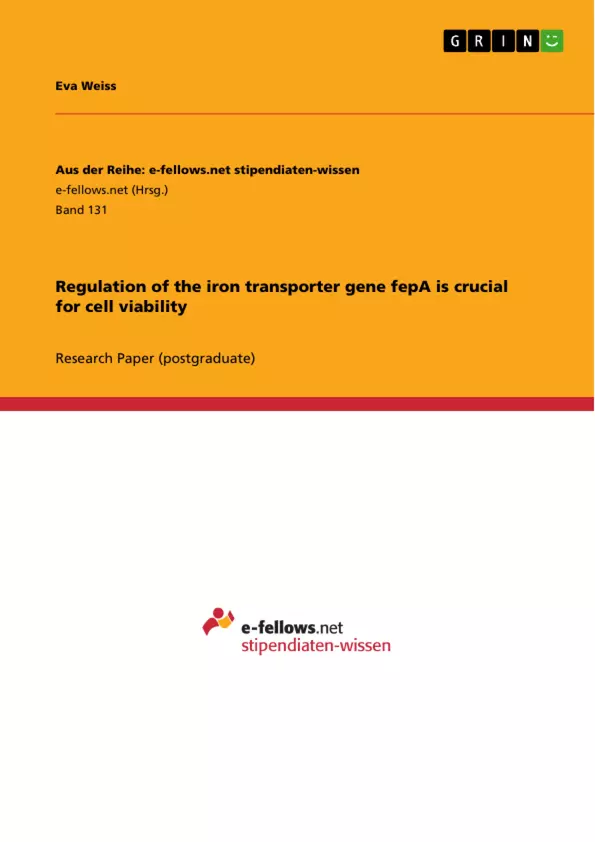FepA is an Escherichia coli (E. coli) membrane protein which transports the iron-bound siderophore ferric enterobactin from the exterior into the periplasm. Thereby it helps to provide the cells with soluble iron. In the study, its gene, fepA, was ligated into pUC8. E. coli cells were then transformed with this construct and tested for presence and orientation of sense or antisense expression. The majority of colonies that have taken up pUC8 with a fepA fragment were found to contain the gene in antisense orientation. It was concluded that removal of the gene from its regulation leading to its over-expression results in unviable clones possibly due to membrane protein toxicity or iron toxicity.
Inhaltsverzeichnis (Table of Contents)
- INTRODUCTION
- MATERIALS & METHODS
- Amplification, isolation and digestion of pPC104
- Preparation of pUC8 for cloning
- Preparation of competent JM83 E. coli
- Ligation of pUC8 and fepA fragment
- Transformation of JM83 E.coli with the ligation product
- Determination of insert orientation
- RESULTS
- DISCUSSION
Zielsetzung und Themenschwerpunkte (Objectives and Key Themes)
This study investigates the regulation of the iron transporter gene fepA in Escherichia coli (E. coli). The main objective is to understand the effects of removing fepA from its endogenous promoter and placing it under the control of a different promoter in the plasmid pUC8. The study aims to determine the impact of this manipulation on cell viability and to shed light on the regulatory mechanisms governing fepA expression.
- Regulation of iron transporter gene fepA
- Impact of gene over-expression on cell viability
- Role of the promoter in gene regulation
- Mechanism of iron uptake in E. coli
- Potential toxicity of over-expressed membrane proteins
Zusammenfassung der Kapitel (Chapter Summaries)
- Introduction: This section introduces the importance of iron uptake for bacterial survival, highlighting the role of siderophores and the protein FepA in iron acquisition. It describes the structure and function of FepA and its interactions with other proteins involved in iron transport. The section also discusses the regulation of fepA expression, particularly the involvement of the repressor protein Fur.
- Materials & Methods: This chapter outlines the detailed procedures used in the study. It describes the amplification, isolation, and digestion of the plasmid pPC104 containing the fepA gene. It also details the preparation of pUC8, the creation of competent E. coli cells, the ligation of the fepA fragment into pUC8, the transformation of E. coli cells, and the determination of the insert orientation.
- Results: This section presents the findings of the study, highlighting the successful ligation of the fepA fragment into pUC8 and the subsequent transformation of E. coli cells. It analyzes the orientation of the fepA insert in the resulting clones, revealing a disproportionate number of clones with the insert in an antisense orientation.
Schlüsselwörter (Keywords)
This research focuses on the regulation of the iron transporter gene fepA in Escherichia coli (E. coli). Key themes include iron uptake, siderophore transport, membrane protein expression, gene regulation, promoter activity, cell viability, and the impact of gene over-expression on bacterial growth. The study investigates the role of the repressor protein Fur in regulating fepA expression and the potential toxicity of over-expressed membrane proteins.
- Quote paper
- Eva Weiss (Author), 2010, Regulation of the iron transporter gene fepA is crucial for cell viability , Munich, GRIN Verlag, https://www.hausarbeiten.de/document/175339


